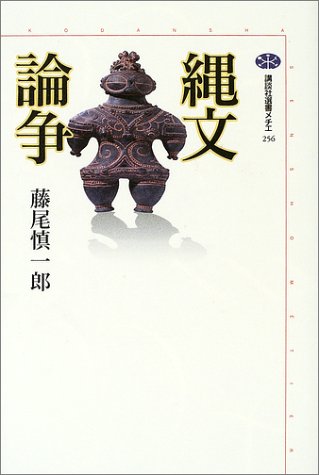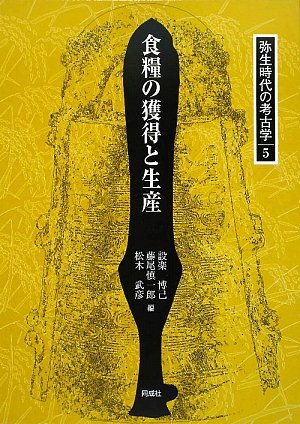18 0 0 0 OA AMS-炭素14年代測定法が明らかにした日本の鉄の歴史
- 著者
- 藤尾 慎一郎
- 出版者
- The Iron and Steel Institute of Japan
- 雑誌
- 鉄と鋼 (ISSN:00211575)
- 巻号頁・発行日
- vol.91, no.1, pp.11-15, 2005-01-01 (Released:2009-06-19)
- 参考文献数
- 12
- 被引用文献数
- 3 2
This paper focuses on the influence what the AMS-carbon 14 age method attains to the history of the iron in the Japanese Islands.The research team in National Museum of Japanese History makes a clear that the Yayoi period began in 10 Cen. cal BC. However, there was a problem in this.It is iron. If the Yayoi period has started in the 10th Cen. BC, it means that the ironware in Japanese Islands had spread early rather than it spreads in China.The research team reexamined the ironware excavated from Magarita site in the Fukuoka Pref. considered to be the oldest ironware in Japan. Consequently, the excavation situation was indefinite and it turned out that we cannot specify the time to belong.Furthermore, 36 ironwares in the initial and early Yayoi were also already found by that time cannot be specified except for two points. Therefore, it turned out that Japanese ironware appeared in the 3rd century of B.C. What does this mean?Although it had been thought that the beginning of agriculture in Japan and the appearance of ironware were simultaneous, it turned out that agriculture has appeared early about in 700 years. Therefore, it became clear that agriculture of Japan started at the Stone Age.
16 0 0 0 OA 弥生時代の開始年代 ―AMS-炭素14年代測定による高精度年代体系の構築―
- 著者
- 藤尾 慎一郎 今村 峯雄 西本 豊弘 Shin'ichiro FUJIO Mineo IMAMURA Toyohiro NISHIMOTO フジオ シンイチロウ イマムラ ミネオ ニシモト トヨヒロ
- 出版者
- 総合研究大学院大学文化科学研究科
- 雑誌
- 総研大文化科学研究 = Sokendai review of cultural and social studies (ISSN:1883096X)
- 巻号頁・発行日
- no.1, pp.69-96, 2005-08-10
10 0 0 0 OA 弥生農耕の起源と東アジア-炭素年代測定による高精度編年体系の構築-
6 0 0 0 OA 西日本の弥生稲作開始年代
- 著者
- 藤尾 慎一郎
- 出版者
- 国立歴史民俗博物館
- 雑誌
- 国立歴史民俗博物館研究報告 = Bulletin of the National Museum of Japanese History (ISSN:02867400)
- 巻号頁・発行日
- vol.183, pp.113-143, 2014-03-31
本稿は,「弥生時代の実年代」(雄山閣)[藤尾2009b]の発表後に行った,いわゆる2400年問題の時期に相当する弥生前期中頃~後半(板付Ⅱa式~板付Ⅱb式)期の炭素14年代測定の結果と,過去に行った当該期の測定値をあわせて,西日本各地における灌漑式水田稲作(以下,弥生稲作)の開始年代と派生する問題について考察したものである。対象とした遺跡は,新たに測定した福岡県大保横枕遺跡,徳島県庄・蔵本遺跡,鳥取県本高弓ノ木遺跡と,過去に行った福岡県福重稲木遺跡,同雀居遺跡,熊本県山王遺跡,大分県玉沢条里跡遺跡,愛媛県阿方遺跡,広島県黄幡1号遺跡である。測定・解析の結果,板付Ⅰ式新段階の年代が前8世紀末葉の20年間ほどであることを初めて確認するとともに,板付Ⅱa式は前700~前550年頃,板付Ⅱb式は前550年~前380年頃,という2009年段階の結論を追認した。さらに鳥取平野の弥生稲作が,近畿よりも早い前7世紀前葉には始まっていた可能性のあること,徳島平野では奈良盆地や伊勢湾沿岸地域と同じ前6世紀中頃になって弥生稲作が始まっていたことを再確認した。九州北部を出発点とする,山陰ルート,瀬戸内ルート,高知ルートという3つの弥生稲作の東進ルートのうち,山陰ルートも他の2ルートとほぼ同時に拡散したことを意味する。伊勢湾沿岸地域で弥生稲作が始まるまでの約400年のうちの約250年間,九州北部玄界灘沿岸地域にとどまっていた弥生稲作は,玄界灘沿岸地域を出ると,一気に鳥取平野~岡山平野~香川平野~高知平野を結ぶ線まで広がり,その後も5~60年で神戸,さらに70年で徳島,奈良盆地,伊勢湾沿岸まで急速に広がっていった。このことは,玄界灘沿岸地域と西日本では,縄文人の弥生稲作の受け入れ方になんらかの違いがあった可能性を示唆している。
4 0 0 0 OA 年輪酸素同位体比を用いた日本列島における先史暦年代体系の再構築と気候変動影響評価
全国の埋蔵文化財調査機関と協力して、年輪酸素同位体比の標準年輪曲線の時空間的な拡張と気候変動の精密復元を行いながら、酸素同位体比年輪年代法による大量の出土材の年輪年代測定を進め、考古学の年代観の基本である土器編年に暦年代を導入して、気候変動との関係を中心に日本の先史時代像全体の再検討を行った。併せて、年輪酸素同位体比の標準年輪曲線(マスタ―クロノロジー)を国際的な学術データベースに公開すると共に、官民の関係者への酸素同位体比年輪年代法の技術一式の移転に取り組んだ。
3 0 0 0 IR 古墳出現期の炭素14年代測定
- 著者
- 春成 秀爾 小林 謙一 坂本 稔 今村 峯雄 尾嵜 大真 藤尾 慎一郎 西本 豊弘
- 出版者
- 国立歴史民俗博物館
- 雑誌
- 国立歴史民俗博物館研究報告 (ISSN:02867400)
- 巻号頁・発行日
- vol.163, pp.133-176, 2011-03
奈良県桜井市箸墓古墳・東田大塚・矢塚・纏向石塚および纏向遺跡群・大福遺跡・上ノ庄遺跡で出土した木材・種実・土器付着物を対象に,加速器質量分析法による炭素14年代測定を行い,それらを年輪年代が判明している日本産樹木の炭素14年代にもとづいて較正して得た古墳出現期の年代について考察した結果について報告する。その目的は,最古古墳,弥生墳丘墓および集落跡ならびに併行する時期の出土試料の炭素14年代に基づいて,これらの遺跡の年代を調べ,統合することで弥生後期から古墳時代にかけての年代を推定することである。基本的には桜井市纏向遺跡群などの測定結果を,日本産樹木年輪の炭素14年代に基づいた較正曲線と照合することによって個々の試料の年代を推定したが,その際に出土状況からみた遺構との関係(纏向石塚・東田大塚・箸墓古墳の築造中,直後,後)による先後関係によって検討を行った。そして土器型式および古墳の築造過程の年代を推定した。その結果,古墳出現期の箸墓古墳が築造された直後の年代を西暦240~260年と判断した。
3 0 0 0 OA 弥生文化の輪郭 : 灌漑式水田稲作は弥生文化の指標なのか
- 著者
- 藤尾 慎一郎
- 出版者
- 国立歴史民俗博物館
- 雑誌
- 国立歴史民俗博物館研究報告 = Bulletin of the National Museum of Japanese History (ISSN:02867400)
- 巻号頁・発行日
- vol.178, pp.85-120, 2012-03-01
本稿では,弥生文化を,「灌漑式水田稲作を選択的な生業構造の中に位置づけて,生産基盤とする農耕社会の形成へと進み,それを維持するための弥生祭祀を行う文化」と定義し,どの地域のどの時期があてはまるのかという,弥生文化の輪郭について考えた。まず,灌漑式水田稲作を行い,環壕集落や方形周溝墓の存在から,弥生祭祀の存在を明確に認められる,宮崎~利根川までを橫の輪郭とした。次に各地で選択的な生業構造の中に位置づけた灌漑式水田稲作が始まり,古墳が成立するまでを縦の輪郭とした。その結果,前10 世紀後半以降の九州北部,前8 ~前6 世紀以降の九州北部を除く西日本,前3 世紀半ば以降の中部・南関東が先の定義にあてはまることがわかった。したがって弥生文化は,地域的にも時期的にもかなり限定されていることや,灌漑式水田稲作だけでは弥生文化と規定できないことは明らかである。古墳文化は,これまで弥生文化に後続すると考えられてきたが,今回の定義によって弥生文化から外れる北関東~東北中部や鹿児島でも,西日本とほぼ同じ時期に前方後円墳が造られることが知られているからである。したがって,利根川以西の地域には,生産力発展の延長線上に社会や祭祀が弥生化して,古墳が造られるという,これまでの理解があてはまるが,利根川から北の地域や鹿児島にはあてはまらない。古墳は,農耕社会化したのちに政治社会化した弥生文化の地域と,政治社会化しなかったが,網羅的な生業構造の中で,灌漑式水田稲作を行っていた地域において,ほぼ同時期に成立する。ここに古墳の成立を理解するためのヒントの1 つが隠されている。
3 0 0 0 IR 弥生鉄史観の見直し (農耕社会の成立と展開 : 弥生時代像の再構築)
- 著者
- 藤尾 慎一郎
- 出版者
- 国立歴史民俗博物館
- 雑誌
- 国立歴史民俗博物館研究報告 = Bulletin of the National Museum of Japanese History (ISSN:02867400)
- 巻号頁・発行日
- vol.185, pp.155-182, 2014-02
弥生文化は,鉄器が水田稲作の開始と同時に現れ,しかも青銅器に先んじて使われる世界で唯一の先史文化と考えられてきた。しかし弥生長期編年のもとでの鉄器は,水田稲作の開始から約600年遅れて現れ,青銅器とほぼ同時に使われるようになったと考えられる。本稿では,このような鉄の動向が弥生文化像に与える影響,すなわち鉄からみた弥生文化像=鉄史観の変化ついて考察した。従来,前期の鉄器は,木製容器の細部加工などの用途に限って使われていたために,弥生社会に本質的な影響を及ぼす存在とは考えられていなかったので,弥生文化当初の600年間,鉄器がなかったとはいっても実質的な違いはない。むしろ大きな影響が出るのは,鉄器の材料となる鉄素材の故地問題と,弥生人の鉄器製作に関してである。これまで弥生文化の鉄器は,水田稲作の開始と同時に燕系の鋳造鉄器(可鍛鋳鉄)と楚系の鍛造鉄器(錬鉄)という2系統の鉄器が併存していたと考えられ,かつ弥生人は前期後半から鋳鉄の脱炭処理や鍛鉄の鍛冶加工など,高度な技術を駆使して鉄器を作ったと考えてきた。しかし弥生長期編年のもとでは,まず前4世紀前葉に燕系の鋳造鉄器が出現し,前3世紀になって朝鮮半島系の鍛造鉄器が登場して両者は併存,さらに前漢の成立前には早くも中国東北系の鋳鉄脱炭鋼が出現するものの,次第に朝鮮半島系の錬鉄が主流になっていくことになる。また弥生人の鉄器製作は,可鍛鋳鉄を石器製作の要領で研いだり擦ったりして刃を着けた小鉄器を作ることから始まる。鍛鉄の鍛冶加工は前3世紀以降にようやく朝鮮半島系錬鉄を素材に始まり,鋳鉄の脱炭処理が始まるのは弥生後期以降となる。したがって鋳鉄・鍛鉄という2系統の鉄を対象に高度な技術を駆使して,早くから弥生独自の鉄器を作っていたというイメージから,鋳鉄の破片を対象に火を使わない石器製作技術を駆使した在来の技術で小鉄器を作り,やがて鍛鉄を対象に鍛冶を行うという弥生像への転換が必要であろう。Starting to use iron implements at the same time as the initiation of the wet rice cultivation, the Yayoi culture has been considered as the only prehistoric culture in the World that started using iron implements before bronze implements. According to the long chronology of the Yayoi culture, however, iron implements are considered to have appeared 600 years after the initiation of the wet rice cultivation, at the almost same time as the appearance of bronze implements. This article examines changes in the iron historical view of the Yayoi culture (the historical view of the iron culture) to reveal how the development of iron as assumed above affects the perspective of the Yayoi culture.Previous studies did not consider that iron implements in the early Yayoi had any substantial influences on the Yayoi society because of their limited use such as for delicate work on wood containers. Therefore, there are no significant differences when assuming that the first 600 years of the Yayoi period did not have iron implements.The new historical view, however, makes profound differences in the place of origin of iron materials and in the iron manufacturing techniques of Yayoi people. With regard to iron implements in the Yayoi culture, the conventional view suggested that there were two types of iron appearing at the same time as the initiation of rice cultivation: cast iron (malleable cast iron) originated from the Yan State and tempered iron (wrought iron) originated from the Chu State. Previously, Yayoi people were considered to have had advanced techniques to make iron implements, such as decarbonizing cast iron and forging tempered iron, in the latter half of the Early Yayoi period.According to the long chronology of the Yayoi culture, however, cast iron originated from the Yan State first appeared in the early forth century B.C., and then tempered iron originated from the Korean Peninsula followed in the third century B.C., resulting in the coexistence of both types of iron. Moreover, decarbonized-cast-iron steel originated from the Chinese northeast region appeared before the birth of the Former Han Dynasty. In the end, the wrought iron from the Korean Peninsula gradually went mainstream.In addition, the iron manufacturing technology of Yayoi people started with edging small iron implements by sharpening and grinding malleable cast iron in the same way as making stone tools. The forging of tempered iron started with Korean-origin wrought iron after the third century B.C., and the decarbonizing of cast iron commenced after the Late Yayoi period.In summary, it is necessary to change the perspective of the Yayoi iron culture. Yayoi people did not make their own iron implements from two types of iron, cast and tempered iron, by using their advanced technology at an early stage. Instead, they started with making small implements of cast iron pieces by using conventional fireless techniques to produce stone tools at first and then developed their techniques to forge tempered iron.
3 0 0 0 OA 古代日韓における青銅器の製作および流通と原料産地の変遷に関する研究
2 0 0 0 ゲノム配列を核としたヤポネシア人の起源と成立の解明
リースしているサーバー(すさのを)および国立遺伝学研究所のスーパーコンピュータを用いて、現代人ゲノムの解析環境をととのえた。2018年度に購入したサーバー2台(うみさちとやまさち)を用いて、古代人や公開されている現代人ゲノムや動植物ゲノムデータの格納をおこない、それらデータの解析環境を整えた。季刊誌Yaponesianの2020年はる号、なつ号、あき号、2021年ふゆ号を編集刊行した。新学術領域研究ヤポネシアゲノムのウェブサイトを運営した。特に今年度は英語版を充実させた。2020年6月27-28日に、立川市の国立国語研究所にて総括班会議と全体会議をハイブリッド方式で開催した。2021年2月15-17日に、国立遺伝学研究所と共催で「ゲノム概念誕生百周年記念シンポジウム」をオンラインで開催した。2021年3月2-3日に、 「第2回くにうみミーティング」(若手研究者育成の一環)を開催し、公開講演会もオンラインで実施した。2021年3月19-21日に、佐倉市の国立歴史民俗博物館にて全体会議と総括班会議をハイブリッド方式で開催した。
2 0 0 0 IR 弥生時代の開始年代--AMS-炭素14年代測定による高精度年代体系の構築
- 著者
- 藤尾 慎一郎 今村 峯雄 西本 豊弘
- 出版者
- 総合研究大学院大学文化科学研究科
- 雑誌
- 総研大文化科学研究 (ISSN:1883096X)
- 巻号頁・発行日
- no.1, pp.69-96, 2005-08
1 0 0 0 OA 佐倉と江戸 : 近世の瓦質・土師質土器からみた地域性(Ⅴ. 生活文化史への視点)
- 著者
- 藤尾 慎一郎
- 出版者
- 国立歴史民俗博物館
- 雑誌
- 国立歴史民俗博物館研究報告 = Bulletin of the National Museum of Japanese History (ISSN:02867400)
- 巻号頁・発行日
- vol.36, pp.255-294, 1991-11-11
考古学からみた江戸は市中を中心に進んだ発掘調査によって全貌が徐々に明らかにされつつある。特に焼物をつかって江戸市民の暮しの復原や武家と町民の比較研究も盛んである。江戸時代の焼物には広域にわたって流通する陶磁器と各地で生産された素焼・瓦質の土器があるが,何を解きあかそうとするかによって資料として選ぶ焼物の種類は変わってくる。今回は江戸時代最大の消費都市である江戸とその周辺に位置する譜代大名の城下町の違いを日常生活のレベルからおさえるために,ゴマやマメを妙る土器である焙烙(ほうろく)を用いて迫ってみたものである。焙烙は底部がきわめて薄くつくられているため,長距離の運搬には向かず,広域流通には不適な土器と考えられるところから,各地でつくられその商圏は非常に狭かったといわれている。したがって焙烙にみられる地域色を追求すれば,その商圏の範囲をおさえることができるし,各地の生活レベルや囲炉裏や竈といった火力施設にあった焙烙がつくられていたと予想されるため,当時の各地の生活の実態を探るうえでも有効な遺物であるといえよう。分析の結果,江戸市中に比べて佐倉では囲炉裏から竈への転換がかなり遅れたことや,江戸とその周辺に中世からつながる工人集団と17世紀に関西から招聘されたとされる関西系工人が存在し,両者が消費のニーズにあわせてしのぎを削っていた状況があきらかとなった。しかし絶対数が多い在地系工人主体の生産がここ佐倉では大勢を占めていたのである。また彼らと歴史上の下総土器作り集団との関連も注目される。江戸時代の煮沸具にみられる地域差が当時の生活状態を反映していたことは,筆者の専門である縄文・弥生時代の生活実態にもつながるものとして大いに期待できる分野である。
1 0 0 0 OA 弥生鉄史観の見直し
- 著者
- 藤尾 慎一郎
- 出版者
- 国立歴史民俗博物館
- 雑誌
- 国立歴史民俗博物館研究報告 = Bulletin of the National Museum of Japanese History (ISSN:02867400)
- 巻号頁・発行日
- vol.185, pp.155-182, 2014-02-28
弥生文化は,鉄器が水田稲作の開始と同時に現れ,しかも青銅器に先んじて使われる世界で唯一の先史文化と考えられてきた。しかし弥生長期編年のもとでの鉄器は,水田稲作の開始から約600年遅れて現れ,青銅器とほぼ同時に使われるようになったと考えられる。本稿では,このような鉄の動向が弥生文化像に与える影響,すなわち鉄からみた弥生文化像=鉄史観の変化ついて考察した。従来,前期の鉄器は,木製容器の細部加工などの用途に限って使われていたために,弥生社会に本質的な影響を及ぼす存在とは考えられていなかったので,弥生文化当初の600年間,鉄器がなかったとはいっても実質的な違いはない。むしろ大きな影響が出るのは,鉄器の材料となる鉄素材の故地問題と,弥生人の鉄器製作に関してである。これまで弥生文化の鉄器は,水田稲作の開始と同時に燕系の鋳造鉄器(可鍛鋳鉄)と楚系の鍛造鉄器(錬鉄)という2系統の鉄器が併存していたと考えられ,かつ弥生人は前期後半から鋳鉄の脱炭処理や鍛鉄の鍛冶加工など,高度な技術を駆使して鉄器を作ったと考えてきた。しかし弥生長期編年のもとでは,まず前4世紀前葉に燕系の鋳造鉄器が出現し,前3世紀になって朝鮮半島系の鍛造鉄器が登場して両者は併存,さらに前漢の成立前には早くも中国東北系の鋳鉄脱炭鋼が出現するものの,次第に朝鮮半島系の錬鉄が主流になっていくことになる。また弥生人の鉄器製作は,可鍛鋳鉄を石器製作の要領で研いだり擦ったりして刃を着けた小鉄器を作ることから始まる。鍛鉄の鍛冶加工は前3世紀以降にようやく朝鮮半島系錬鉄を素材に始まり,鋳鉄の脱炭処理が始まるのは弥生後期以降となる。したがって鋳鉄・鍛鉄という2系統の鉄を対象に高度な技術を駆使して,早くから弥生独自の鉄器を作っていたというイメージから,鋳鉄の破片を対象に火を使わない石器製作技術を駆使した在来の技術で小鉄器を作り,やがて鍛鉄を対象に鍛冶を行うという弥生像への転換が必要であろう。
- 著者
- 藤尾 慎一郎
- 出版者
- 国立歴史民俗博物館
- 雑誌
- 国立歴史民俗博物館研究報告 (ISSN:02867400)
- 巻号頁・発行日
- no.68, pp.215-251, 1996-03
本稿は,ブリテン新石器時代の葬制研究を紹介したものである。ブリテン新石器研究は,近代考古学がはじまって以来,巨石建造物(メガリス)を研究対象にしてきた。巨石建造物が新石器時代の編年をおこなう際の指標として位置づけられてきたこともあるが,何よりもそこからみつかる大量のバラバラになった人骨が人々の関心をひきつけてきたからである。人骨がみつかるために,巨石建造物はしごく当然に墓と考えられ,なぜ,このような状況で大量の骨がみつかるのか,を考えた葬制研究が,ブリテン新石器研究の中心だったのである。1950年代までは,大量の人骨が,バラバラになった状態で建造物内につくられた石室内におかれるようになった原因をめぐり研究がすすんだが,'60年代のいわゆるプロセス期になると,このような行為には生の世界の社会組織や構成原理が反映しており,巨石建造物はモニュメント(巨石記念物)と認識されるようになる。'80年代のポスト・プロセス期になると,一転してそのような行為に,生の世界の社会組織や構成原理は反映されないとしてプロセス学派は批判され,行為自身や石室構造にこめられた象徴性の解明をめぐる研究がおこなわれる。そして現在,新石器前期は儀礼を再優先していた時代との認識と,儀礼行為自身が人々の表現戦略であったと考えられるにいたっている。縄文時代の葬墓制研究は,ここ20年ほど,親族研究・社会組織の解明を中心に進展してきた。最近わかってきたモニュメントでおこなわれていた祭りと,墓でおこなわれた死者儀礼とはどのような関係にあるのか。今後,どういう方向に向かおうとしているのか。再葬・合葬主体のブリテン前期新石期時代と一次葬・個人墓主体の縄文時代という枠組みをこえて考える。
1 0 0 0 食糧の獲得と生産
- 著者
- 設楽博己 藤尾慎一郎 松木武彦編
- 出版者
- 同成社
- 巻号頁・発行日
- 2009
1 0 0 0 OA 古墳出現期の炭素14年代測定
- 著者
- 春成 秀爾 小林 謙一 坂本 稔 今村 峯雄 尾嵜 大真 藤尾 慎一郎 西本 豊弘
- 出版者
- 国立歴史民俗博物館
- 雑誌
- 国立歴史民俗博物館研究報告 = Bulletin of the National Museum of Japanese History (ISSN:02867400)
- 巻号頁・発行日
- vol.163, pp.133-176, 2011-03-31
奈良県桜井市箸墓古墳・東田大塚・矢塚・纏向石塚および纏向遺跡群・大福遺跡・上ノ庄遺跡で出土した木材・種実・土器付着物を対象に,加速器質量分析法による炭素14年代測定を行い,それらを年輪年代が判明している日本産樹木の炭素14年代にもとづいて較正して得た古墳出現期の年代について考察した結果について報告する。その目的は,最古古墳,弥生墳丘墓および集落跡ならびに併行する時期の出土試料の炭素14年代に基づいて,これらの遺跡の年代を調べ,統合することで弥生後期から古墳時代にかけての年代を推定することである。基本的には桜井市纏向遺跡群などの測定結果を,日本産樹木年輪の炭素14年代に基づいた較正曲線と照合することによって個々の試料の年代を推定したが,その際に出土状況からみた遺構との関係(纏向石塚・東田大塚・箸墓古墳の築造中,直後,後)による先後関係によって検討を行った。そして土器型式および古墳の築造過程の年代を推定した。その結果,古墳出現期の箸墓古墳が築造された直後の年代を西暦240~260年と判断した。
- 著者
- 藤尾 慎一郎
- 出版者
- 国立歴史民俗博物館
- 雑誌
- 国立歴史民俗博物館研究報告 (ISSN:02867400)
- 巻号頁・発行日
- vol.110, pp.3-29, 2004-02
古墳時代の倭と加耶の交流を語る上でもっとも重要な問題の一つである鉄が,弥生時代の両地域間においても重要であったことは,この地が倭で用いられる鉄資源の供給地であったことからも明らかである。本稿は,鉄を媒介とした交流を考えるうえで弥生時代にさかのぼる重要な四つの問題を取り上げた。まず弥生時代の鉄器の原料であった鉄素材にはどのようなものがあったのかという,鉄素材の種類の問題。第2に鉄素材はどのようにして弥生社会にもたらされたのかという舶載・国産の問題。第3に鉄素材を加工し鉄器を作った施設,すなわち鍛冶炉の問題。第4に鉄器製作技術である。現在,弥生時代の鉄素材にはいくつかの種類があり,鉄素材ごとに由来,処理する鍛冶炉の構造,鉄器製作工程が異なることが明らかにされている。なかでもとくに注目されるのが,後期以降の西日本で類例が増えている板状鉄製品である。その化学成分から,韓半島東南部で作られた可能性が指摘されている板状鉄製品は,のちの加耶地域の鉄素材の前身となりうるものとして注目される。以前より論争のある板状鉄斧鉄素材説をめぐる議論が膠着状態におちいるなかで,これらと板状鉄素材との関係について検討した結果,興味深い事実が判明した。
1 0 0 0 OA 西部九州の刻目突帯文土器
- 著者
- 藤尾 慎一郎
- 出版者
- 国立歴史民俗博物館
- 雑誌
- 国立歴史民俗博物館研究報告 = Bulletin of the National Museum of Japanese History (ISSN:02867400)
- 巻号頁・発行日
- vol.26, pp.1-77, 1990-03-10
Included in the earthenwares in the period when the paddy farming was started in Japan is a ware with incised plastic band. The representative pottery of this kind is a jar type pottery (a cooking tool) found mainly in the Western Japan, west of the districts along the Ise Bay. As the distinctive features, it is a deep bowl, and has incised patterns: the plastic bands are adhered at the mouth and the outer surface of its body, and then the plastic bands are incised using a finger or spatula. This is a pot positioned at the transition period from the Jômon period of the culture of gathering and hunting to the Yayoi period of the culture of paddy farming. When dealing with the issues of the transition period, it is quite important where to position this ware. For example, when the division of the times is discussed, such as when the Yayoi period starts, a different conclusion may be drawn depending on the assumption whether this ware is regarded to belong to the Jômon pottery or this ware is regarded to belong to the Yayoi pottery. The western Kyûsyû (Fukuoka Prefecture, Saga Prefecture, Nagasaki Prefecture, Kumamoto Prefecture and Kagoshima Prefecture) is known as the district where the paddy farming had been started in the first place. It is an important fundamental work to put in order the chronological researches on the wares with incised plastic band found in these districts in order to carry on the studies on the start of the Yayoi period.In this paper, attentions were given to the decorative patterns on the mouth and on the body of the jar and six forms were set up. Then, each form was classified into 5 types based on the six attributes (a method to incise patterns, positions to adhere the pastic band around the mouth, the form of the pots, the sizes or the clay bands at the mouth and on the body, surface adjustment of pots and clay band adjustment). As a result, the beginning and the end of the first half of the Yayoi period (approx. BC400~BC100) can be divided into five stages. Period I: a period the pottery with the incised plastic band was born and spread; the pottery of this kind appeared in the Western Kyûsyû under the influence of the Setouchi and Kinki districts. On that occasion, Nijô-kame unique to this district was born.Period II: Nijô-kame born in the Western Kyûsyû appeared also in the Setouchi and Kinki districts. Based on this phenomenon, it can be assumed that the paddy farming had been started even in the Setouchi and Kinki districts.Period III: Itaduke-Ongagawa wares were born in the coastal districts of the Genkai-nada in the Western Kyûsyû (the district from Karatsu-city, Saga Prefecture to Fukuoka-city, Fukuoka Prefectute) and the distribution was expanded. In some regions of the Western Japan from Kyûsyû to Kinki district, the pottery with the incised plastic band almost disappeared, but continued in other regions.Period IV: In the Setouchi district where the pottery with the incised plastic band had disappeared in the period III, the pottery with the incised plastic band reappeared.Period V: The style of the pottery of this period onward developed further based on the patterns of potteries born in the various regions, as a result of the interchanges of the pottery with the incised plastic band born in the period I and Itaduke-Ongagawa wares born in the period III.It is possible to vividly reproduce the circumstances how the Yayoi culture, a period of the agriculture unique to Japan, was born and developed in the dissension of the culture introduced from the Asian Continent and the conventional Jômon culture, if the pottery with the incised plastic band is confrontally positioned with the pottery of Itaduke-Ongagawa wares.
1 0 0 0 OA 研究の経緯と成果・課題
- 著者
- 藤尾 慎一郎
- 出版者
- 国立歴史民俗博物館
- 雑誌
- 国立歴史民俗博物館研究報告 = Bulletin of the National Museum of Japanese History (ISSN:02867400)
- 巻号頁・発行日
- vol.149, pp.1-30, 2009-03-31
一部非公開情報あり

